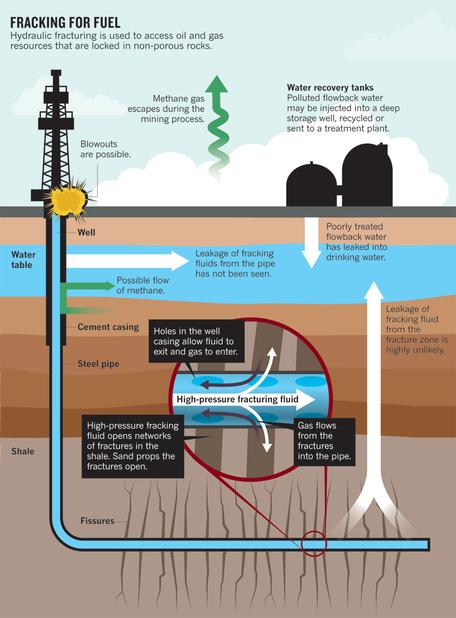Hydraulic fracturing, or fracking, is one of the most important methods to extract natural gas to the surface. For nearly 60 years fracking played a big role for America’s development. 35,000 wells in the US are using hydraulic fracturing method. The first hydraulically fractured well was built in the 1940s. Studies show that most of natural gas wells in the future will require hydraulic fracturing.
How does it work?

Water and sand are the main components of hydraulic fracturing. High pressure is used during the injection of water and sand into the formation to create cracks, allowing resources to move freely inside the pores. Mostly, a pipe made of steel is cemented into place at the top of the well to protect groundwater from flowing upward. The depth of wells usually depends on groundwater protection as well as other factors such as the geological history of surface land. When drilling deeper into the well additional casing is added for protection of formations, from which oil or natural gas is to be produced. It also protect groundwater from the chemicals that been used. Casing an cementing play an important role during the well construction process, they do not only protect groundwater but also essential to extract oil and natural gas successfully. Nearly 99% of the fluids used consist of water and sand, however some chemicals added to strengthen the flow, and those chemicals vary from well to another.

Benefits:
- The replacement of coal in power stations.
- Shale gas is cheaper than coal.
- Cleaner, greener and cheaper.
- Better and easier method to find oil
- Increases country’s energy security.
Risks:
- Contamination of groundwater.
- Methane pollution might lead to climate change.
- Air pollution
- Toxic chemicals exposure.
- Possibility of gas explosions.

Environmental impact:
Contamination of water and air pollution are the major impacts on environment. A number of instances with groundwater contamination have been documented, however in most cases a direct link between hydraulic fracturing and groundwater contamination could not be established. Researchers at the US (EPA) have shown that fracking have contaminated groundwater in 1987. In 2007 Valerie Brown said “public exposure to the many chemicals involved in energy development is expected to increase over the next few years, with uncertain consequences”.
http://www.energyfromshale.org/hydraulic-fracturing/what-is-fracking
http://www.elsevier.com/connect/fracking-the-pros-and-cons
http://serc.carleton.edu/NAGTWorkshops/health/case_studies/hydrofracking_w.html
